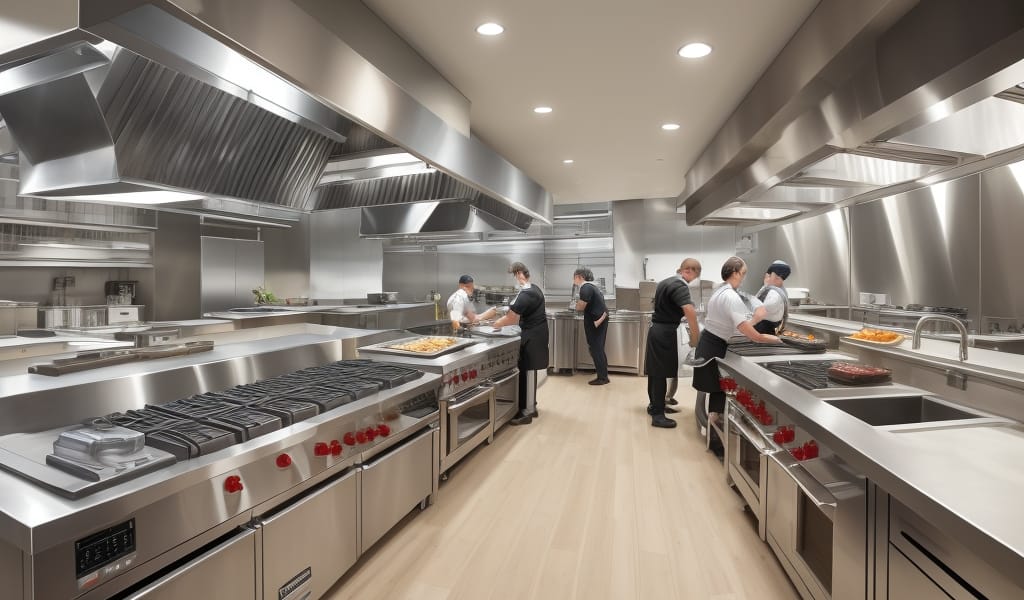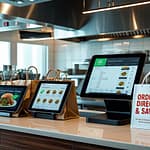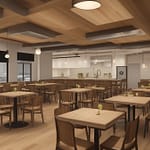Key Takeaways:
- Utilize sales forecasting to make data-driven decisions for your restaurant operations.
- Analyze historical sales data to identify patterns and trends that can inform future sales projections.
- Incorporate factors such as seasonality, holidays, and local events into your sales forecasts to improve accuracy.
- Regularly review and adjust your sales forecasts to reflect real-time changes in restaurant performance.
- Use your sales forecast to plan inventory, manage staff scheduling, and set realistic revenue goals.
Introduction: Why Accurate Sales Forecasting Matters for Restaurants
Restaurant sales forecasting isn’t simply a guesswork exercise—it’s a strategic necessity. Accurate forecasts allow restaurant owners and managers to plan effectively, reduce waste, optimize staff scheduling, and ensure profitability. With proper sales forecasting, restaurant operators can confidently navigate market fluctuations, seasonal trends, and unexpected events.
In this guide, we’ll detail how restaurants can leverage data-driven forecasting techniques and trend analysis to enhance decision-making, improve financial outcomes, and position their businesses for sustained success.
Understanding the Basics of Restaurant Sales Forecasting
Sales forecasting in restaurants involves predicting future sales volumes based on historical data, current market conditions, and anticipated events. Accurate forecasts allow you to adjust inventory, staffing levels, and operational resources to match projected demand, reducing costs and maximizing profit margins.
Common elements influencing restaurant sales forecasts include:
- Historical sales data and trends
- Seasonality and calendar events
- Local market trends and economic factors
- Marketing and promotional activities
- Changes in menu, pricing, or operational hours
Step-by-Step Guide to Forecasting Restaurant Sales
1. Collect and Analyze Historical Data
Start by gathering past sales data. Ideally, you should have at least one to two years of detailed sales records. Your point-of-sale (POS) system can provide valuable insights into sales patterns, peak hours, and popular menu items.
Analyze this data to identify:
- Daily, weekly, and monthly sales patterns
- High-performing menu items
- Sales fluctuations due to holidays or special events
- Impact of past promotions and discounts
2. Consider Seasonal Trends and Special Events
Restaurants often experience predictable seasonal fluctuations. For example, a coastal seafood restaurant might see increased sales during summer months, while a downtown steakhouse may experience higher sales during business conference seasons.
Additionally, special events such as local festivals, sports matches, or concerts can significantly affect customer traffic. Mark these events on your forecasting calendar to better anticipate changes in demand.
3. Factor in External Economic Conditions
Economic factors, including local employment rates, consumer confidence, and regional economic growth, directly impact dining habits. During economic downturns, casual dining venues might see decreased foot traffic, while quick-service restaurants might experience stability or growth due to affordability.
Monitor regional economic reports and industry trends regularly to adjust your forecasts accordingly.
4. Adjust Forecasts Based on Promotions and Marketing Efforts
Marketing campaigns, discounts, loyalty programs, and promotional offers can significantly influence your sales. For instance, launching a limited-time menu or running a social media promotion may boost short-term sales.
Analyze past marketing efforts to estimate their impact. Incorporate these insights into your forecast, adjusting anticipated sales upward or downward depending on the scale and effectiveness of planned promotions.
5. Use Reliable Forecasting Methods and Tools
Several proven forecasting methods can help you accurately predict restaurant sales:
- Moving Averages: Calculate average sales over a specific period to smooth out short-term fluctuations and identify underlying trends.
- Exponential Smoothing: Assign greater weight to recent sales data, which is useful for rapidly adapting to changing conditions.
- Regression Analysis: Evaluate relationships between sales performance and variables such as marketing spend, pricing, or economic indicators.
Modern POS software, integrated forecasting applications, and restaurant management systems often include forecasting tools that automate these calculations and provide actionable reports.
Real-World Examples of Effective Restaurant Sales Forecasting
Example 1: Seasonal Planning at a Coastal Restaurant
A seafood restaurant located in a tourist-heavy coastal town noticed significant sales variations tied to seasonal tourism. By analyzing historical sales data, they identified peak tourist months (June-August) and low-season months (November-February). Using moving average forecasting, the management team accurately predicted inventory needs, staffing levels, and promotional strategies, significantly improving profitability and reducing waste during off-peak months.
Example 2: Trend Analysis for a Fast-Casual Chain
A growing fast-casual burger chain conducted regression analysis to determine how menu pricing changes affected sales volumes. By examining historical data from multiple locations, they identified clear relationships between pricing, customer traffic, and revenue. Leveraging these insights, the chain planned strategic pricing adjustments that improved margins without negatively impacting customer traffic.
Example 3: Event-Based Forecasting for an Urban Café
An urban café located near a major sports arena experienced fluctuating sales depending on event schedules. By closely tracking historical sales on event days versus non-event days, the café developed event-specific forecasts. This allowed management to allocate staffing and inventory efficiently, maximizing revenues during busy event periods and minimizing unnecessary labor costs during slower times.
Best Practices for Accurate Restaurant Sales Forecasting
To ensure your forecasting efforts yield reliable and actionable results, keep these best practices in mind:
- Regularly Update Forecasts: Sales forecasting is not a one-time event. Update your forecasts regularly to account for changing market conditions and new data.
- Involve Your Team: Front-line managers and staff often have valuable insights into customer behavior and operational realities. Involve them in the forecasting process to gain practical perspectives.
- Integrate Multiple Data Sources: Leverage data from your POS system, reservation platforms, customer feedback tools, and external market data sources to create comprehensive forecasts.
- Create Scenarios: Prepare multiple forecast scenarios—optimistic, pessimistic, and realistic—to help your team understand potential outcomes and develop flexible contingency plans.
Common Pitfalls and How to Avoid Them
Despite best efforts, restaurant sales forecasting can sometimes lead to inaccuracies. Understanding common pitfalls can help you avoid them:
- Over-Reliance on Historical Data: While past performance is vital, ignoring current market changes or external factors can lead to outdated assumptions. Combine historical analysis with real-time market insights.
- Ignoring Staff Input: Managers and line staff often have firsthand knowledge of customer preferences and day-to-day fluctuations. Failing to leverage this input can result in less accurate forecasts.
- Underestimating the Impact of Promotions: Promotions and discounts can have unforeseen impacts on sales and profitability. Accurately estimate the short-term and long-term effects of promotional activities to avoid miscalculations.
Conclusion: Empower Your Restaurant with Data-Driven Forecasting
Effective sales forecasting is a powerful tool that enables restaurant owners and managers to make informed decisions, optimize resource allocation, and enhance profitability. By carefully analyzing historical data, incorporating external factors, and embracing flexible forecasting methods, your restaurant can confidently anticipate market changes and customer behavior.
Investing time and effort into robust sales forecasting practices positions your restaurant for sustained success, resilience, and competitive advantage in the dynamic hospitality industry.






Comments
Be the first to comment on this article.